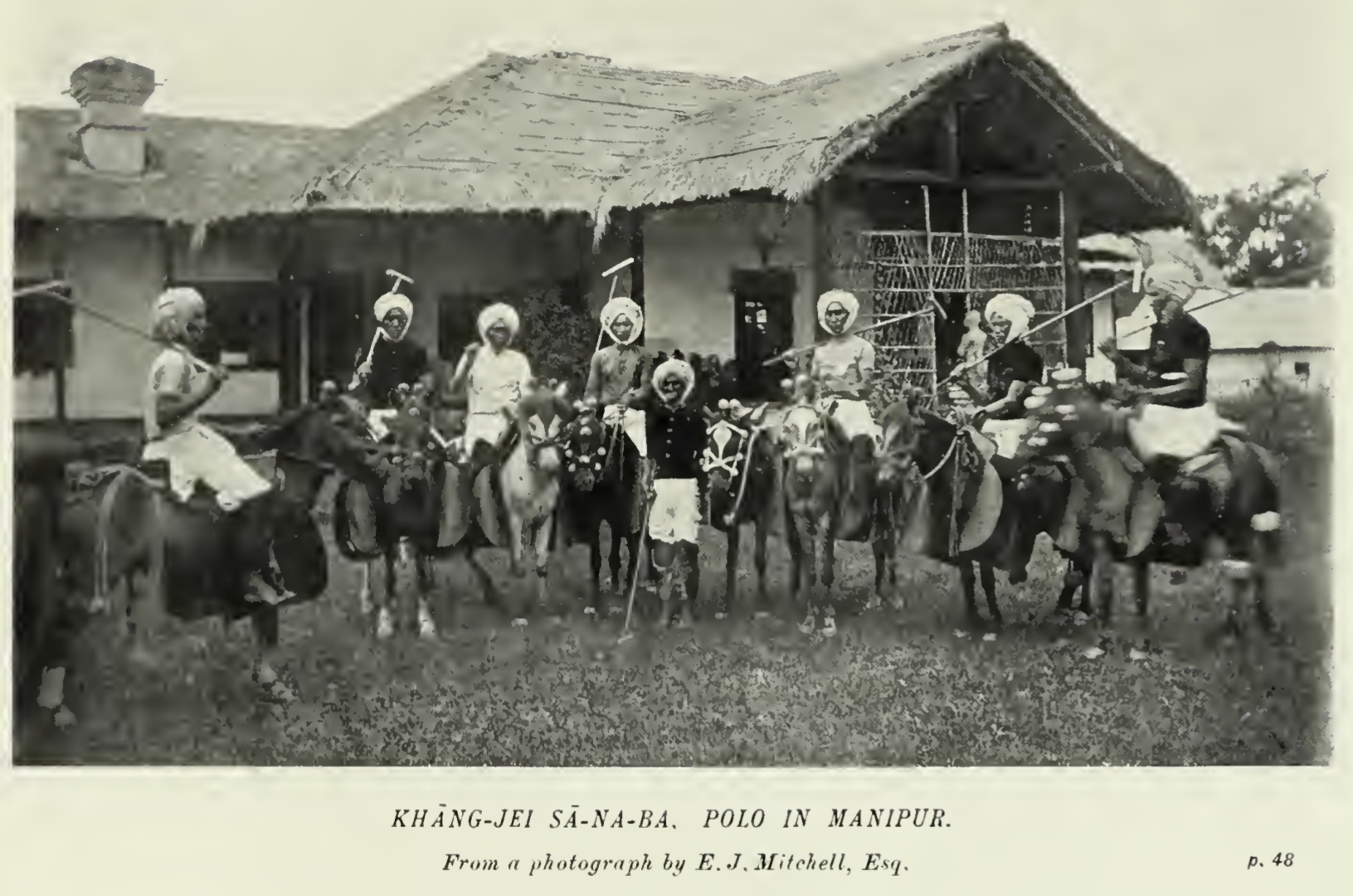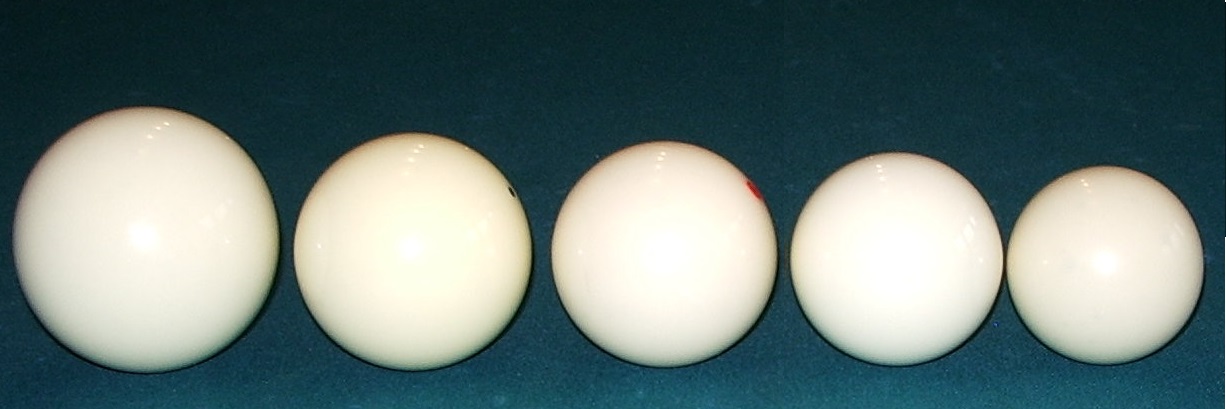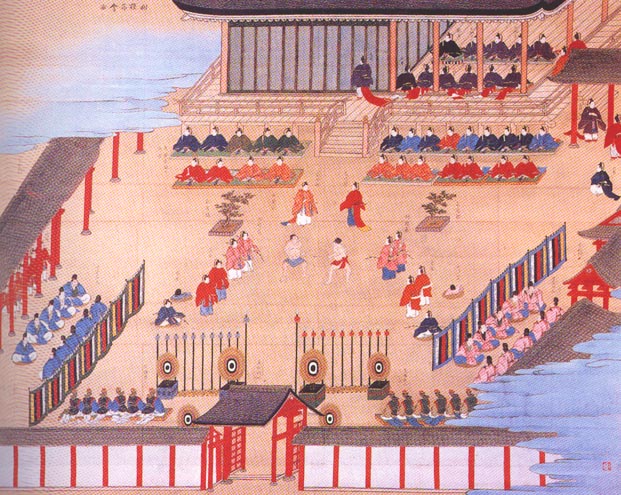|
Dakyu
is an equestrianism, equestrian sport in East Asia with some similarities to polo. It also goes by the name of gyeokgu in Korea () since the Chinese characters, Hanzi character 擊 ( zh, p=jī) is transliterated as: ''gyeok'' or and carries the same meaning as the zh, t=打, rr=ta, revhep=da, which translates as: ''to beat, to strike,'' or ''to hit.'' As one might expect, translates to ''ball.'' History Originally from China, dakyu was played in Japan as early as the Nara period, making its way there via the Korean Peninsula. It remained popular amongst the aristocracy until the Kamakura period, when it gradually died out (the last recorded game being in 986). In the eighteenth century the game reappeared, largely due to support from Tokugawa Yoshimune. By this time it had evolved from a polo-like game (using mallets) to something more akin to mounted lacrosse. During this period, dakyu was considered a corollary to military training (working the skills needed to wield a spe ... [...More Info...] [...Related Items...] OR: [Wikipedia] [Google] [Baidu] |
Polo
Polo is a stick and ball game that is played on horseback as a traditional field sport. It is one of the world's oldest known team sports, having been adopted in the Western world from the game of Chovgan (), which originated in ancient Iran, dating back over 2,000 years. Initially played by Persian nobility as a training exercise for cavalry units, polo eventually spread to other parts of the world. The game is played by two opposing teams with the objective of scoring using a long-handled wooden mallet to hit a small hard ball through the opposing team's goal. Each team has four mounted riders, and the game usually lasts one to two hours, divided into periods called ''chukkas'' or ''chukkers.'' Polo has been called "The Sport of Kings" and has become a spectator sport for equestrians and high society, often supported by sponsorship. The progenitor of polo and its variants existed from the 6th century BC to the 1st century AD, as an equestrian game played by the Ira ... [...More Info...] [...Related Items...] OR: [Wikipedia] [Google] [Baidu] |
Sagol Kāngjei
Sagol Kangjei () (also Sakol Kangchei, Shakol Kangchei, Shagol Kangjei) is a Meitei tradition, traditional Meitei ball sport played on horseback with a long-handled stick. The sport, also known as Manipuri polo, is a predecessor of modern international polo. History and myth Manipuri polo is one of the world's oldest sports, with some historians claiming it was first played in the ancient Meitei kingdom of Ancient Kangleipak, Kangleipak. ''Sagol kāngjei'' is a Meitei culture, traditional Meitei form of polo and the ancestor of polo, the modern game. In Meitei mythology and Meitei folklore, folklore, ''sagol kāngjei'' was played by the ancient Meitei gods, gods led by Marjing and Thangjing. In the Cheitharol Kumbaba, the Royal Chronicle of Kangleipak, ''sagol kāngjei'' was not only a sport, but used as an instrument of diplomacy, politics, and palace intrigue. According to the ''Kangjeirol'' (), another ancient Meitei language text, polo was played during the reign of King ... [...More Info...] [...Related Items...] OR: [Wikipedia] [Google] [Baidu] |
Polo
Polo is a stick and ball game that is played on horseback as a traditional field sport. It is one of the world's oldest known team sports, having been adopted in the Western world from the game of Chovgan (), which originated in ancient Iran, dating back over 2,000 years. Initially played by Persian nobility as a training exercise for cavalry units, polo eventually spread to other parts of the world. The game is played by two opposing teams with the objective of scoring using a long-handled wooden mallet to hit a small hard ball through the opposing team's goal. Each team has four mounted riders, and the game usually lasts one to two hours, divided into periods called ''chukkas'' or ''chukkers.'' Polo has been called "The Sport of Kings" and has become a spectator sport for equestrians and high society, often supported by sponsorship. The progenitor of polo and its variants existed from the 6th century BC to the 1st century AD, as an equestrian game played by the Ira ... [...More Info...] [...Related Items...] OR: [Wikipedia] [Google] [Baidu] |
Billiards
Cue sports are a wide variety of games of skill played with a cue stick, which is used to strike billiard balls and thereby cause them to move around a cloth-covered table bounded by elastic bumpers known as . Cue sports, a category of stick sports, may collectively be referred to as billiards, though this term has more specific connotations in some English dialects. There are three major subdivisions of games within cue sports: * Carom billiards, played on tables without , typically ten feet in length, including straight rail, balkline, one-cushion carom, three-cushion billiards, artistic billiards, and four-ball * Pocket billiards (or pool), played on six-pocket tables of seven, eight, nine, or ten-foot length, including among others eight-ball (the world's most widely played cue sport), nine-ball (the dominant professional game), ten-ball, straight pool (the formerly dominant pro game), one-pocket, and bank pool *Snooker, English billiards, and Russian pyra ... [...More Info...] [...Related Items...] OR: [Wikipedia] [Google] [Baidu] |
Equestrian Sports
Equestrian sports are sports that use horses as a main part of the sport. This usually takes the form of the rider being on the horse's back, or the horses pulling some sort of horse-drawn vehicle. General * * * * * * * * * * * * * FEI international disciplines * * * * * * * Regional governance * * Olympic disciplines * * * Paralympic disciplines *Dressage only at the Equestrian at the Summer Paralympics, Paralympics; dressage and combined driving at other FEI events Dressage * * Racing * * * * * Other timed events * * English riding * * * * * * * * * * * * * Western riding * * * * * * * * * Stock handling * * * * * * * * Rodeo *American rodeo events ** ** ** ** ** ** ** ** ** ** * * * Harness * * * * * * * * Scurry driving — High speed obstacle competition Team sports * * * * * * Regional * * * * * * References {{DEFAULTSORT:Equestrian Sp ... [...More Info...] [...Related Items...] OR: [Wikipedia] [Google] [Baidu] |
Sport In Japan
Sports in Japan are a significant part of Japanese culture. Traditional games of Japan, Traditional sports, such as sumo and martial arts, as well as Western sports, Western imports like baseball, association football, basketball and tennis are popular with both participants and spectators. Sumo is considered Japan's national sport. Baseball was introduced to the country by visiting Americans in the 19th century. The Nippon Professional Baseball league has been Japan's largest professional sports competition in terms of television ratings and spectators. Martial arts such as judo, karate and kendo, modern kendō are also widely practiced and enjoyed by spectators in the country. Association football has gained wide popularity since the founding of the J. League Division 1, Japan Professional Football League in 1992. Other popular sports include figure skating, rugby union, golf, table tennis and racing, especially auto racing. Some new sports were invented by changing elements o ... [...More Info...] [...Related Items...] OR: [Wikipedia] [Google] [Baidu] |
Imperial Household Agency
The (IHA) is an agency of the government of Japan in charge of state matters concerning the Imperial House of Japan, Imperial Family, and the keeping of the Privy Seal of Japan, Privy Seal and State Seal of Japan. From around the 8th century AD until the Second World War, it was known as the . The Agency is unique among conventional government agencies and ministries in that it does not directly report to the Prime Minister of Japan, Prime Minister at the cabinet level, nor is it affected by legislation that establishes it as an Independent Administrative Institution. Organization and functions The Imperial Household Agency is headed by its director-general, assisted by the deputy director, appointed by the Cabinet.Imperial Household AgencyOrganization/ref> Its main organizational positions are: * the Grand Steward's Secretariat * the Board of Chamberlains * the Crown Prince's Household * the Board of Ceremonies * the Archives and Mausolea Department * the Maintenance and W ... [...More Info...] [...Related Items...] OR: [Wikipedia] [Google] [Baidu] |
Jereed
Jereed, known by the name Equestrian Javelin (also jerreed, jerid, or jerrid; ) is a traditional Turkish equestrian team sport played outdoors on horseback in which the objective is to score points by throwing a blunt wooden javelin, or stick, at opposing team's horsemen. Played by Turkic peoples in Central Asia as the essential sporting and ceremonial game, it was brought to Anatolia during the westward migration in the beginning of the 11th century. History Horses have been essential and even sacred animals for Turks living as nomadic tribes in the Central Asian steppes. Turks were born, grew up, lived, fought and died on horseback. So became jereed the most important sporting and ceremonial game of Turkish people. The term itself is an Arabic word (جريد) that refers to a javelin or stick made from stripped palm fronds. Jereed came to Anatolia with Turks as they migrated in 1071 from their homelands in Central Asia. Later in the 16th century, Ottoman Turks accepted it ... [...More Info...] [...Related Items...] OR: [Wikipedia] [Google] [Baidu] |
Buzkashi
Buzkashi () is the most favored sport of Afghanistan. It is a traditional sport in which horse-mounted players attempt to place a goat or Calf (animal), calf carcass in a goal. Similar games are known as kokpar, kupkari, and ulak tartysh in Uzbekistan and Kazakhstan. History Buzkashi began among the nomadic Asian tribes who came from farther north and east spreading westward from China and Mongolia between the 10th and 15th centuries in a centuries-long series of migrations that ended only in the 1930s. From Scythian times until recent decades, buzkashi has remained a legacy of that bygone era.G. Whitney AzoyBuzkashi: Game and Power in Afghanistan, Third Edition. Waveland Press 2011. pp.3-4G. Whitney Azoy, Buzkashi: Game and Power in Afghanistan, 2nd ed. (2002), InAcademic Dictionaries and Encyclopedias "buzkashi" Events * World Nomad Games * 2013 - The first Asian championship in kokpar, or buzkashi. * 2018 - The inaugural weeklong world championship ended in Astana. Distrib ... [...More Info...] [...Related Items...] OR: [Wikipedia] [Google] [Baidu] |
Chovgan
Chovgan, Chowgan or Chogan () is a team sport with horses that originated in ancient History of Iran, Iran (Name of Iran, Persia). It was considered an aristocratic game and held in a separate field, on specially trained horses. The game was widespread among the Asian peoples. It is played in Iran, Azerbaijan, Tajikistan, and Uzbekistan. It was later adopted in the Western World, known today as polo. History Chovgan originated in ancient Iran and was a Persian national sport played extensively by the nobility. Women played Chovgan as well as men. Chovgan originated in the middle of the first millennium Anno Domini, A.D., as a team game. It was popular during the centuries in the Middle East. Fragments of the game were periodically portrayed in ancient miniatures, and detailed descriptions and rules of the game were also given in the ancient manuscripts. Chogān is an Iranian traditional horse-riding game accompanied by music and storytelling. It has a history of over 2,000 year ... [...More Info...] [...Related Items...] OR: [Wikipedia] [Google] [Baidu] |
The Mikado's Empire (1894) (14804178323)
''The'' is a grammatical article in English, denoting nouns that are already or about to be mentioned, under discussion, implied or otherwise presumed familiar to listeners, readers, or speakers. It is the definite article in English. ''The'' is the most frequently used word in the English language; studies and analyses of texts have found it to account for seven percent of all printed English-language words. It is derived from gendered articles in Old English which combined in Middle English and now has a single form used with nouns of any gender. The word can be used with both singular and plural nouns, and with a noun that starts with any letter. This is different from many other languages, which have different forms of the definite article for different genders or numbers. Pronunciation In most dialects, "the" is pronounced as (with the voiced dental fricative followed by a schwa) when followed by a consonant sound, and as (homophone of the archaic pronoun ''thee'' ... [...More Info...] [...Related Items...] OR: [Wikipedia] [Google] [Baidu] |








